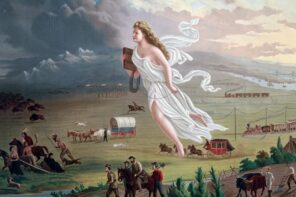We wondered.
We wondered, just like everyone else did: why didn’t Elizabeth Smart run? There she was, wandering downtown Salt Lake City, right in our midst, the veiled captive of a madman.
But we also recognized something in that paralysis, that deadly quiet. We recognized something of ourselves.
Now, Elizabeth Smart, continuing her elegant and courageous adult self-realization, tells an audience at a Johns Hopkins University event on human trafficking that a very traditional Mormon culture object lesson on sexual purity contributed decisively to the paralysis that kept her a captive.
She recalls that a teacher once held up a chewed up piece of used chewing gum and compared it to a young woman who lost her virginity. And after surviving sexual assault during her captivity, Smart recalls:
“I thought, ‘Oh, my gosh, I’m that chewed up piece of gum, nobody re-chews a piece of gum, you throw it away.’ And that’s how easy it is to feel like you know longer have worth, you know longer have value,” Smart said. “Why would it even be worth screaming out? Why would it even make a difference if you are rescued? Your life still has no value.”
In my class, it wasn’t chewing gum. It was the rose damaged by being passed around the circle—its petals browned and limp. Other Mormon women remember mangled cupcakes and donuts. Who, after all, would want to actually eat the donut that had been passed around?
And we laugh about it, these days, we do. Because (we hope) times are changing. We celebrate new official LDS Church curriculum for Mormon young women that eradicates the old chastity object lessons, even as we know that clearing them from Mormon culture will take much, much longer. And Mormon feminists raise their voices (here and here) about ways we’re still not doing young women in Mormonism many favors in the way we teach sexuality and particularly in a hyper-emphasis on modesty in dress that has emerged in many Mormon communities.
And then we read Elizabeth Smart, and we find ourselves once again in that place, that place of deadly stillness, that paralysis, that we lived in during those weeks in late spring 2002. When we wondered why she couldn’t just run. But inside we already knew.




